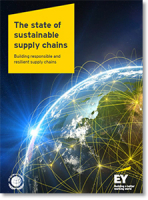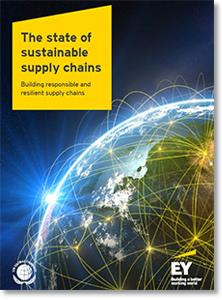The State of Sustainable Supply Chains
The Sustainable Development Goals not only identify where we have to be in 2030 to create a sustainable world that leaves no one behind; they also outline new markets and opportunities to innovate for companies everywhere.
With the adoption of the United Nations (UN) 2030 Agenda and the Sustainable Development Goals (SDGs), we have entered a period where the world’s nations have committed to ending global poverty, protecting our planet and promoting a life of dignity for all.
The role of business is key in achieving these goals.
The SDGs provide a new common language for all stakeholders, including business, to establish goals and ambitions.
The 2030 Agenda is a wake-up call and offers a new benchmark for the business of tomorrow.
Supply chain sustainability will be critical in making the global goals part of local business so that the extension of a company’s operations, products and services can support the realities of our planet and better serve markets both today and in the future.
In the UN Global Compact’s Annual Implementation Survey, our participants rank supply chain practices as the biggest challenge to improving their sustainability performance.
Extending the UN Global Compact Ten Principles into the supply chain is a difficult endeavor - often due to the size of the supply chain, and distance from suppliers and partners operating in countries or regions with less rigorous legal standards.
Progress on supply chain sustainability can be made when the priority is set at the top of the organization. If the chief executive sees the supply chain as an extension of the company’s workforce and community, expectations can be set related to leading practices in key areas, such as selection, training, auditing and remediation.
It is also important to create a broader understanding within an organization - for example, among legal staff, product developers and marketing - of how decisions made beyond procurement have impacts on the supply chain.
In addition, companies must look at their supply chains as a whole, including suppliers beyond the first tier that may have the most significant risks or
challenges in addressing sustainability issues.
To help companies integrate supply chain sustainability, the UN Global Compact works to identify and promote leading business practices, tools and resources, and innovative approaches, and develop guidance to assist companies.
As part of this work, the UN Global Compact has teamed up with EY to develop this report highlighting the actions companies are taking to develop more sustainable supply chains, their primary reasons for doing so and the main challenges they are facing.
What’s Related




Favorites





